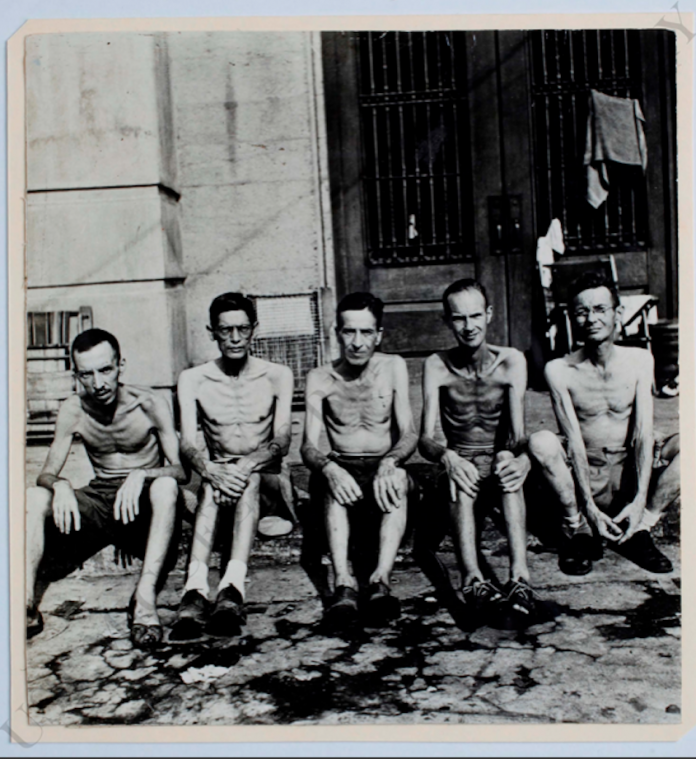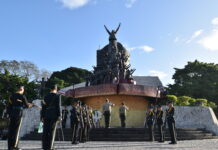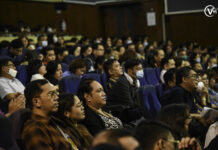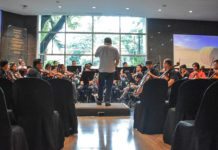“I believe that war is becoming inevitable. In such an eventuality, I don’t think you will graduate.”
WHAT could be more appalling than this premonition uttered by Prof. Mercedes Grau Santamaria to her senior Philosophy students two days before the Japanese shelled their way to the pages of history by maneuvering a surprise attack on Pearl Harbor?
However, to her students who were obviously very eager to march not on the battlefield but on the stage to get their diplomas, the forecast seemed absurd. Instead, one of her students even managed to crack a joke saying, “Perhaps, war is forthcoming, ma’am, but I don’t think the Japanese are cruel enough not to let us graduate.”
On December 8, 1941, the seemingly ludicrous premonition happened – not from the Japanese, as one student predicted, but from Pres. Manuel L. Quezon who announced the closing of all classes after the Americans declared war against the Japanese.
Meanwhile, the fate of the Catholic and Pontifical University of Santo Tomas, on the onslaught of World War II, did not end with the temporary exodus of students. On January 4, 1942, UST once again became part of Philippine history as the Japanese who occupied Manila made use of the then 330-year old university as an internment camp for the thousands of foreigners trapped in the country.
FORCED SEPARATION
Marrying a Filipino, Spanish, or other non-internable persons seemed to be the only way for them to be spared of the camp life.
However, their presumption proved to be wrong when the Japanese began taking even the married couples to the Santo Tomas Internment Camp (STIC). Since they were not in the position to resist the Japanese military’s orders, they were forced to just follow them. At any rate, more of the men considered it best for their wives and children to stay out of the camp. Luckily, the Japanese were considerate enough to grant their wish. The steadfast anticipation what it will not take long before the liberating forces come was one of the reasons why these men chose to be separated from the families.
Unfortunately, hopes of early deliverance was never realized. Not until the next three years. Thus. The long, nostalgic, and worrying period of separation began.
The early months of camp life saw the rather loose treatment experienced by the internees under the hands of the Japanese. Wives were allowed to send in food, clothing and other stuffs to their husbands inside.
Furthermore, a few months after being inside the STIC, most of the internees who had families outside were allowed to return to their homes on the condition that they were to report periodically to the Japanese authorities at Santo Tomas. Those who were allowed to meet their families outside believed that they will never be obliged to return to the camp again and they were equally convinced that their decision to have their families outside was indeed a brilliant one.
The last cheerful goodbye with hopes of being reunited with their families soon happened on May 17, 1943. Those with temporary passes to go out were summoned back to the STIC as the US Army began to make the Japanese feel that they were coming to get them.
Months passed and questions like “where are the liberating forces?”, “What’s taking them too long? And “What’s keeping them from liberating the internees? Were questions to which at that time, only the American forces seemed to know the answers. What is clear was that as time went by, the problems of men who received news about their families grew worse.
According to the information they gathered, the Japanese military demands that their wives pay rent on properties which they actually own and that included a back rent so high that made their properties confiscatory. As this kind of cruelty took place, some lost their houses whereas others who agreed to pay a part of the rent lost theirs a little later.
Natural disasters like typhoons may be calamitous to other but ironically, the typhoon which severely hit Manila from Nov. 14-16, 1943 came as a “blessing in disguise” for men who have families outside.
As the internees worry about the situation of their families outside, some internee representatives asked Japanese authorities to allow the families of the confined men to stay within the camp. When Japanese agreed to show an act of humanity, almost all of the internees with wives and children outside were able to see their families.
Unluckily, the internees were yet to be treated to the worst under the hands of the Japanese. On January 4, 1944, the Japanese who were obviously feeling the threat of an impending clash with the liberating forces applied harsher and stricter disciplinary orders to all their captives. Even the internees who according to the Geneva Convention of 1929, should be shielded from forced labor were not exempted from Japanese cruelties. As much as six orders a day were proclaimed and internees were expected to follow them zealously.
An example of these rules states that all captives were required to stop and bow before Japanese officers. Those who were rebellious were slapped, suffered reduction in food ration and their privileges were suspended.
Contact between the men inside their families outside was permanently shut-off when on February 8, 1944, Japanese authorities prevented people from the outside in supplying packages to their relatives within the camp. Neither were the internees allowed to go outside to purchase the things they needed.
Regardless of the violations of all the international agreements regarding the proper treatment of civilians in countries under the enemy’s control, the Japanese continued to keep the internees isolated.
As a proof of the Japanese authorities’ firm decision to keep the internees from any contact outside, the Tribune and La Vanguardia, the circulations which gave news about the outside world were barred from circulating within the STIC.
NO WAY OUT
In an interview with Mrs. Florence Hackett, an internee who survived the wrath of the war, she revealed that during the entire duration of the internment years, it seemed ironical that internees never worried much about being apprehended by the Japanese. Instead, their main preoccupation during those days was the thought of where to get their meals for the day and their ever-burning hope that deliverance would come soon. However, three of the internees apparently had other things in their minds when they went over the walls of STIC after having tasted a bit of camp life.
On February 13, 1942, three internees namely Blackely Borthwick Laycock, Henry Edward Weeks, and Thomas Henry Fletcher bolted out of the camp by climbing the “sawali” walls of the STIC. However, they were not fortunate enough to reach their planned destinations for after a five-mile chase, they were caught near Bambang, Sta. Cruz.
The incident not only disturbed the entire internee community but at the same time, it made the internal committee worry about any possible disciplinary measures to be enforced by the Japanese not only on the escapees but on the entire community as well.
The next move made by the Japanese commander proved that in the same way as the escapes made them realize if the poor security enforced within the camp, it became necessary to retaliate by teaching the stubborn internees a lesson which at the same time would instill fear among possible future offenders.
After the capture, the escapes were bound with ropes and were taken back to the camp. The Japanese commander then ordered the torture and execution of the three in spite of the protest files by the internal committee.
The serious mistake committed by Laycock, Weeks, and Fletcher led them to their death at the North Cemetery where they were buried in the graves which they personally dug.
The STIC was filled with a thousand and one ironies.
After the irony of the typhoon, the unusual twist in the meaning of the word shanty came out.
Frederic Stevens, in his book Santo Tomas Internment Camp
said: “Shanties! The very name usually brings to mind the dirt and uneven distribution of wealth, the lower strata of society, the squalor of coal mines, the dregs of the city slums, but in Santo Tomas, shanties meant wealth, comfort, and more healthful way of living.”
On the other hand, the irony of the shanties was just an expression of a much bigger problem that was predominant within the camp—congestion. As the number of the internees steadily grew, it became inevitable that this who wished to build their quarters outside the gymnasium and Main, High School and Education buildings must be allowed to do so.
Moreover, starvation and contraction of communicable diseases added up to the worsening problem of congestion thereby claiming lives of several internees.
In the face of the distressing difficulties compounding the internees, it seemed that only the long-awaited deliverance would end their miseries.
On February 3, 1945, about 200 men belonging to the First Calvary Division was guided by Capt. Manuel Colayco as they rammed through the walls of the camp. And soon after the tanks rolled inside the STIC, deliverance from the hands of the Japanese allowed.
Although it was an easy victory for the liberating forces inside the camp, the Japanese soldiers made a last-ditch effort to save their lives by holding several American hostages at the Education building. It was only after a truce agreed by both parties on Feb. 5, 1945 that the liberation of the entire internee population was realized.




















